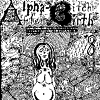Published January 30, 2002 at 4:00 a.m.
When young authors make history, it’s usually for their unconventional ideas or their reckless, off-the-page exploits. Not so with Shaun Bryer, a 20-year-old junior at St. Michael’s College. Bryer is the author of Around Morristown (Arcadia, $19.99, 128 pages), a paperback pictorial history of Morristown, Vermont. He looks more like a choirboy than a hell-raiser. In fact, Bryer is a choirboy; he spoke about his new book over the phone during a recent tour with the St. Mike’s Liturgical Choir, preparing that morning for a prayer service at Ground Zero in Manhattan.
Bryer, a lifelong Morrisville resident, attributes his interest in local history to his involvement in the Morristown Historical Society; he’s been a tour guide for three years at the Society’s Noyes House Museum, and currently serves as its director. He’s also active in other town matters, most notably as the chair of the Morristown Fourth of July Committee. With a double major in American Studies and Elementary Education, Bryer says he took on the book project “to do something that would hopefully spark an interest [in local history] in young people.”
Local history buffs may be familiar with the book’s format — a collection of annotated photographs and brief introductory essays. Around Morristown is part of the Images of America series produced by Arcadia, an imprint of the Charleston, South Carolina-based Tempus Publishing, Inc. Other Vermont locales represented in the national series include Burlington, St. Johnsbury, Stowe and Brattleboro. When Arcadia expressed interest in covering Morrisville, they logically approached the Historical Society, found Bryer, and the rest is, well, history.
To meet the publisher’s population requirement — generally towns of 7000 or more are profiled — Bryer expanded the book to include Morristown and outlying towns like Elmore and Wolcott. He particularly likes Arcadia’s use of archival photos. “I know that people really love photographs,” he says. “I think it’s neat to see images of what the town used to be like. It’s amazing to see how things have changed.”
The image Bryer finds most curious is the last one in the book, a drawing from a rare mid-20th-century postcard he discovered in the Historical Society archives. Titled “Morrisville, VT in the Future,” the postcard depicts a bizarrely ambitious futuristic scene: old-timey storefronts are the backdrop for an elevated Morrisville-Stowe train line; a street car runs underneath the tracks proclaiming service to Eden, Hyde Park and Morrisville; a blimp flies overhead, imprinted with the words, “To Mount Mansfield.”
Of course, Bryer observes, Morrisville doesn’t turn out anything like that. He points out that the big building with the storefronts burned down in the 1970s, before he was even born. The important thing, he says, is for people to think of the town’s future as malleable. In this age of suburban sprawl, the health of any small town depends upon the vision and involvement of its citizens.
Not surprisingly, the young author is considering a run for town office sometime in the near future. But for now, he hopes Around Morristown will inspire a renewed interest in historic preservation and civic life. And if it doesn’t, well, at least it’ll help pay for college — he gets 10 percent of the royalties.
While he’s hitting the books, Bryer might want to peruse a copy of Deborah Pickman Clifford’s The Passion of Abby Hemenway: Memory, Spirit, and the Making of History, out this month from the University of New England Press ($24.95, 360 pages). Hemen-way was a determined scribe who set out, in 1859, to record the early history of every town in Vermont. She faced numerous obstacles, writes Clifford, “from money and legal troubles, to floods and conflagrations.” Not to mention sexism.
Clifford, a former president of the Vermont Historical Society, reports that on the day Hemenway was to begin her journey, she received a discouraging letter from faculty members at Middlebury College. The professors regarded her plan as impractical and “not a suitable work for a woman. How could one woman expect to do what forty men had been trying for sixteen years and could not?” they demanded incredulously.
It won’t ruin the book to reveal that, despite their lack of faith, Hemenway succeeded in producing the illustrated five-volume Vermont Historical Gazetteer, still in use today. Clifford’s book tells the story behind Hemenway’s effort and excerpts highlights from the Gazetteer. She’ll share some of these tales Friday, February 8, at the Vermont Leadership Center in East Charleston.
Coming soon to a bookstore or a faceless, impersonal on-line retailer near you in the next few months: new books by a whole mess of Vermont authors. Look for a review of La Tour Dreams of the Wolf Girl, by UVM prof David Huddle, in this week’s issue. Burning Marguerite, the first novel from St. Mike’s professor Elizabeth Inness-Brown, will be out in February from Knopf. A starred review in Publishers Weekly calls the debut novel a “solid building block in the foundation of a promising career.”
March is full of literary lions. Middle-bury prof Jay Parini has a new novel, The Apprentice Lover, out from Harper Collins. Chris Bohjalian cranked out another one for Random House — The Buffalo Soldier — about a Vermont couple that adopts a black foster child. The Haunting of L., the third and final book in Howard Norman’s Canadian trilogy, is also likely to show up in bookstores at the end of the month. Soon thereafter, look for Lost Nation, from In the Fall author Jeffrey Lent.
The prize for the most curious new endeavor goes to Burlington-based writer and activist Marc Estrin, who picks up where Kafka left off in his ambitious debut novel, Insect Dreams: The Half-Life of Gregor Samsa. Estrin proposes that the chambermaid who swept the insect form of Gregor Samsa into the dustbin in Kafka’s Metamorphosis actually sold him to a sideshow. Somebody at Library Journal really liked Estrin’s revised ending to the Kafka tale; the starred review predicts that Estrin’s 480-page comic and imaginative tome will become “a pivotal literary landmark.”
More By This Author
Comments
Comments are closed.
From 2014-2020, Seven Days allowed readers to comment on all stories posted on our website. While we've appreciated the suggestions and insights, right now Seven Days is prioritizing our core mission — producing high-quality, responsible local journalism — over moderating online debates between readers.
To criticize, correct or praise our reporting, please send us a letter to the editor or send us a tip. We’ll check it out and report the results.
Online comments may return when we have better tech tools for managing them. Thanks for reading.












































